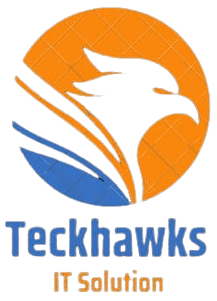15 interesting facts about information technology
The internet is a vast ocean of data. Here are some facts about information technology that will make you say wow.
1. Information Technology (IT) is defined as “the use of computers and telecommunications equipment and related activities". IT is the practice and science of managing computer hardware and software along with the networks that connect them. The field consists of three branches: network management, system administration, and application development.
2. IT is a broad term that encompasses many different technologies. In its purest sense, it refers to both hardware and software. Other terms sometimes used for the "hardware side" include computer engineering. Likewise, the term computing covers both hardware and software. Computing may have developed out of the original term "Information Processing", which was coined in 1946.
3. The first electronic computer was created at Bletchley Park in England during World War II. That computer's name was Colossus. It had 64 vacuum tubes and could perform 16 operations per second.
4. The word "computer" comes from the Latin word "computare", which means "to count". The French mathematician Charles Babbage was the first person to think that counting might be helpful if applied to mechanical devices.
5. The earliest computers were electromechanical devices. These included the first programmable general-purpose digital electronic calculator, ENIAC, built by John Mauchly and J. Presper Eckert in 1945.
6. Early computers stored information using discrete binary digits. Each bit could either be a 0 or 1. There are eight bits in each byte, hence the name "octal." The number 8 is called the base of the octal numbering system. A decimal digit represents ten times the power of 8. Hence, the number 10 represents 28 times the power of 8, 256 times the power of 8 etc., so that a decimal digit represents powers of 2.
7. The binary number system was invented by Herman Hollerith in 1890 as a way to store numbers electronically. He published his work in 1895 under the title "Binary Coded Decimal Transposition". Binary numbers are expressed as strings of ones and zeros. If the string contains 32 ones and no zeros, then the number represented is 232−1 4,294,967,296. Here, the 32 ones represent the 32 bits of the binary number.
8. Over time, computers evolved to be able to manipulate binary numbers directly instead of having to convert them to a decimal representation. Computers began storing their data in memory using binary notation.
9. Computer languages allow users to communicate instructions to a particular type of computer. These instructions tell the computer what to do and how to do it. The instructions and the language are combined into a text file.
10. Computer networks may not seem like much fun, but they're actually pretty cool. Networking systems connect computers together, enabling them to share data and work together. These connections are often invisible to users - they just appear as if wires were connecting the machines together. In reality, however, these cables contain millions of microscopic electronic circuits that allow computers to talk to each other at speeds of hundreds of thousands of miles per hour.
11. Computers use binary code to represent numbers and instructions. Binary code is a series of ones and zeros (or true and false) that combine to create any number we want. Each 1 represents a particular electrical charge, while 0 means no electrical charge. Thus, for example, 01011010 would mean 10 volts charged.
12. Computers store information in memory chips, which are tiny blocks of metal and semiconductor material that connect to the computer's motherboard. Most modern computers have between 64MB and 256GB of RAM installed.
13. Computers use memory cards called flash drives to move data between the hard drive and the computer's operating system. Flash drives are smaller than CDs and DVDs and plug into USB ports.
14. Computers use processors to perform calculations and execute programs. A processor controls what happens inside a computer and responds to user input. When a program requests something from the computer, the processor sends it a command to do something like open a file or play music.
15. Computers use graphics processing units to display color images on their screens. Graphics Processing Units (GPUs) are special-purpose processors that run complex algorithms to create animated videos, 3D games, maps, and many other visual effects.
16. Computers don't really need monitors. Instead, they use displays to show us things on our computer screen. But displays aren't necessary either. Many devices now connect directly to the internet without using a monitor or display at all!
17. Computer screens can get quite dirty over time. Screens collect dust, fingerprints, scratches, hair, skin cells, and more. To clean screen, simply wipe down the glass with a dry cloth.
18. Computers are generally powered by electricity, but some models rely on batteries instead. Batteries are small electrochemical storage devices that convert chemical energy stored in heavy metals and chemicals like lithium ions and sulfur into electrical energy. Batteries can hold a lot of power, making them useful for powering laptops, mobile phones, iPods, and even electric cars.
